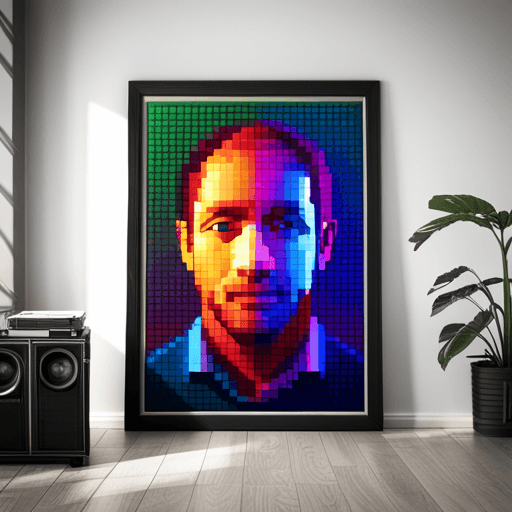Lenticular Prints: An Introduction
Lenticular Prints: An Introduction
Lenticular prints are a type of printing that creates an illusion of depth or the ability to change or move as the image is viewed from different angles. This unique printing technique leverages lenticular lenses, tiny magnifying lenses or prisms, imbuing the printed image with an interactive element that traditional prints simply cannot match.
How Lenticular Prints Work
To understand lenticular printing, it is essential to grasp the concept of interlaced images. Essentially, two or more pictures are sliced into thin strips and interlaced together. Then covered by a lenticular lens which is a transparent, plastic sheet consisting of a series of lenses that magnify specific parts of the underlying image depending on the viewing angle. This means that as you move around the print, the lenses allow your eyes to switch from one image to another, creating the visual effect of motion, depth, or transformation.
The Benefits of Lenticular Prints
The dramatic, eye-catching nature of lenticular prints grants them a few key benefits, particularly in contexts where visual engagement is paramount:
- Visual Appeal: They grab attention for promotional materials due to their changing images and sense of depth.
- Interactivity: They encourage physical interaction as viewers move to experience the different images.
- Memorability: The unique visual effects make them more memorable than standard 2D prints.
- Versatility: They can display multiple messages or images in the space of one print.
How Lenticular Prints are Made
Creating a lenticular print is a technical process that involves several steps:
- Design: The initial images are designed, keeping in mind how different pictures will interlace and view through the lenticules.
- Interlacing: Images are sliced and combined into a single interlaced file where alternating strips of each image are positioned next to each other.
- Printing: The interlaced image file is printed onto a backing material, usually plastic.
- Lamination: A sheet of lenticular lens is laminated onto the interlaced print, aligning the lenses exactly with the interlaced strips.
- Finishing: The print is cut into the final desired shape and size.
Market Availability and Cost
While lenticular printing can be more cost-intensive. Due to its specialized materials and process, its high-impact results could justify the investment, particularly in advertising and marketing campaigns. The availability of lenticular printing has grown, with several specialized printers offering these services worldwide. However, it is a niche market, and not every print shop will have the capability to create lenticular prints.
Use Cases
Lenticular prints are found across various industries, serving diverse purposes:
- Advertising and Marketing: Employed in billboards, posters, and point-of-sale displays for captivating advertising campaigns.
- Education and Training: Used to create educational materials that visually demonstrate changes over time or different perspectives.
- Art and Photography: Allows for a more dynamic and engaging form of visual art, attracting interest from galleries and collectors.
- Product Packaging: Provides an opportunity for brands to stand out on the shelf. With packaging that shifts or reveals additional information.
- Entertainment Industry: Creates collectible items or promotional materials that offer fans an interactive visual component.
Lenticular prints continue to fascinate both creators and viewers with their depth and movement. Providing an entirely different perspective on what printed imagery can achieve. Whether used for business or pleasure, they offer a striking way to make a visual statement.
Potential Challenges in Lenticular Printing
Despite the benefits, there are some challenges involved in lenticular printing that are worth noting:
- Precision: The process requires extremely accurate alignment of the interlaced images. with the lenticular lenses. Any slight misalignment can disrupt the intended effect.
- Image Quality: High-resolution images are necessary to achieve clear, vivid lenticular prints, particularly since the images are sliced into strips.
- Limited Viewing Angles: The viewing angles of lenticular prints are somewhat limited. Thich means that the intended effect can only be seen from certain directions.
- Cost and Time: Lenticular printing is more expensive and time-consuming than traditional printing. Potentially limiting its accessibility for smaller businesses or personal projects.
These challenges do not detract from the effectiveness of lenticular prints. It is important during the planning and production phases to ensure a successful outcome.






